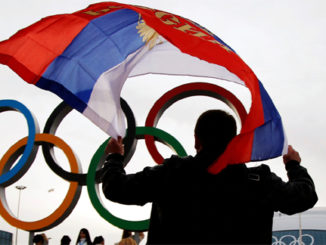
The India of today is different from India at the time of freedom. In the 76 years of independence, Indian Infrastructure has improved drastically. The overall length of the Indian road network has grown from 0.399 million km in 1951 to 4.70 million km as of 2015, which makes it the third largest roadway network in the world. Additionally, India’s national highway system now spans 1, 37, 625 kilometres in 2021, up from 24,000 km (1947–1969).
After over 70 years of independence, India has risen to become Asia’s third-largest electricity generator. It increased its ability to produce energy from 1,362 MW in 1947 to 3, 95, 600 MW. In India, the total amount of power produced increased from 301 billion units in 1992–1993 to 400990.23 MW in 2022. The Indian government has succeeded in lighting up all 18,452 villages by April 28, 2018, as opposed to just 3061 in 1950, when it comes to rural electrification.
India’s infrastructure services are slowly but steadily moving away from the realm of government control to that of the private sector. Across sectors ranging from telecommunications and roads to power and ports, state-owned agencies are giving way to private sector entities operating in a competitive environment and subjected to economic regulation where necessary. Governments at both central and state levels are actively engaged in managing this transition, devising appropriate policy frameworks and establishing suitable institutions such as the central road fund and independent regulatory authorities in power and telecommunication sectors.
Telecommunications
Since India’s independence, its telecommunications sector has continued to be governed by the Indian Telegraph Act of 1885, which placed all telecommunications within the government domain. Telecommunications services were the exclusive monopoly of the Department of Posts and Telegraphs, which had the mandate to regulate and provide these services. Public ownership over the next several decades hampered growth of the sector, leaving India’s teledensity (defined as main lines per 100 inhabitants) among the lowest in the world: 0.4 in 1980 and 0.7 in 1990. The extremely high level of unfulfilled demand was evident from the long waiting lists and the willingness of Indian subscribers to pay large up-front payments for telephone connections.
The government initiated partial reforms in 1985, when the Department of Posts and Telegraphs was divided into separate entities, the Department of Posts and the Department of Telecommunications. In 1986 the government spun off basic telephone services in the two metropolitan cities of Delhi and Mumbai into a new public sector entity, the Mahanagar Telephone Nigam Limited. Overseas communication services were transferred to Videsh Sanchar Nigam Limited. Subsequently, the government ushered in the National Telecom Policy of 1994, which allowed private participation in both basic and cellular services. In 1997 the government enacted legislation to establish the Telecom Regulatory Authority of India.
The process of liberalization received further fillip in 1999 with the adoption of the New Telecom Policy of 1999, which permitted the entry of multiple players into all segments, including fixed line, cellular, and long distance telecommunications. Furthermore, the policy-making and service-providing functions of the Department of Telecommunications were separated; the latter were transferred to a new company, Bharat Sanchar Nigam Limited. In addition, the Telecom Regulatory Authority of India Act was amended in 2000, to bring clarity to the authority’s functions and powers, and a separate Telecom Disputes Settlement and Appellate Tribunal was established to adjudicate disputes.
In November 2003 the government issued guidelines for converging the hitherto disparate basic and cellular licenses into Unified Access Services Licenses. This process of license unification is likely to be extended to other service segments. Today, most major telecommunications operators are aggressively seeking to expand their operations. These expansion plans will, however, require substantial additional investment, and will prove to be a considerable challenge for private players due to the steep decline in tariffs.
The cellular subscriber base nearly doubled in 2002–2003 to reach 12.7 million, and again in 2003–2004, to 26 million.
Power
Private sector participation in the power sector is not new to India. In fact, at the time of independence in 1947, private sector utilities and licenses accounted for over 80 percent of all electricity supplied in India. Immediately after independence, the Electricity Supply Act of 1948 vested responsibility for the generation, transmission, and distribution of electricity to State Electricity Boards (SEBs), marking the first shift toward public ownership in the power sector. Within the next decade, the state electricity boards took over almost all private sector power licenses.
Ports
India has over 3,728 miles (6,000 km) of natural coastline and is strategically well-positioned on global trade routes. India has 13 major ports and over 181 minor ports (of which 139 are operational), which together handle the bulk of India’s foreign trade. Most of the major ports in India were established after independence, except for Kolkata (Calcutta) and Mumbai (Bombay), which were built in the nineteenth century by the British. Responsibility for all major ports has mainly been, and still is, in the domain of the central government. The thirteen major ports handled over 280 million metric tons of cargo in 2001–2002, mostly petroleum, iron ore, and coal; they operate under the jurisdiction of the Ministry of Shipping. The Tariff Authority for Major Ports regulates prices at the major ports, while the remaining ports fall under the jurisdiction of their respective state governments.
Roads
India’s total road network, stretching approximately about 2 million miles (3.3 million km), is the second-largest road system in the world, comprising national highways, state highways, major district roads, and rural roads. Since independence the road network has suffered from a lack of funds, poor monitoring, and inadequate supervision of road projects. Maintenance has been a low priority, which has led to appalling safety conditions, resulting in over 70,000 fatalities per year. Only 46 percent of India’s roads are paved, and of those only 20 percent are in good condition. The last few years have seen a rapid increase in motor vehicles and a marked deceleration in the development of road capacity, as over 85 percent of passenger traffic and 70 percent of freight traffic is carried by the road network. As a result, roads have become congested, and the quality of road travel has deteriorated substantially.
Airports
Airports play a critical role in promoting trade, tourism, and the economic development of a country. The Airports Authority of India was constituted in 1995 to bring about integrated development and the expansion and modernization of operational, terminal, and cargo facilities at India’s airports. Out of a total of 400 airports/airfields/airstrips in the country, the authority manages 94 civil airports (of which 11 are international airports) and 28 civil enclaves at defense airfields. These airports handled over 44 million passengers in 2002–2003 (15 million international and 29 million domestic). The authority is responsible for providing air traffic services over the Indian airspace and adjoining oceanic areas.
Railways
The Indian Railways (IR) is over 150 years old. Since independence, the IR has remained a government enterprise and it currently operates the world’s second-largest rail network under single management, with a route length of over 39,500 miles (63,000 km). The railways carry over one million metric tons of freight and transport over 10 million passengers a day (of which over 5 million are in Mumbai’s suburban network). The annual revenue of the IR is approximately U.S.$5.5 billion, of which freight transport accounts for 70 percent and the balance is passenger traffic.
IR is now facing strong competition from road transport, pipelines, and air transport. Arbitrary pricing policies by the government, especially after 1985, prevented IR from raising passenger fares in line with rising costs, and led to heavy cross-subsidization by overcharging freight customers. Greater customer orientation, more flexibility, and the lower costs of road transport, contrasted with the slow movement and poor service quality of the railways, induced many freight customers to move to relatively cheaper road transport. IR is also plagued by very high operational expenses. In 2000–2001, operating ratio—that is, ratio of total working expenses to gross traffic receipts—reached 98.5 percent. Even as IR is unable to generate enough internal resources to contribute to investment plans, the government too reduced its level of financial support to the railways in the last decade.





Be the first to comment